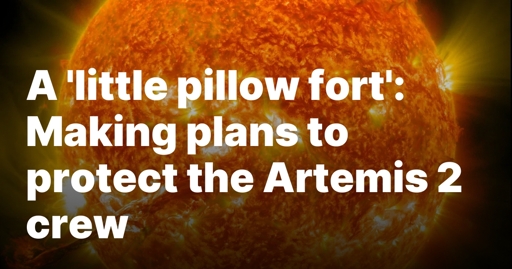That shelter involves taking storage and waste bags in the spacecraft and creating “a little pillow fort,” said Rob Chambers of Lockheed Martin, prime contractor for Orion. The four astronauts would then huddle inside, pressed against one another until the storm subsides.
Sounds cozy :)
Later missions, though, may have more protection. The uncrewed Artemis 1 mission tested AstroRad, a vest designed to protect the torso from solar protons. One manikin, instrumented with radiation detectors, wore the vest, while an identical one did not. “It worked better than expected the first time out,” he said, reducing the effective radiation dose by 40% to 61%.
What did they do for the Apollo missions? Did they just risk it with minimal protection? It was the '60s after all…
The Apollo spacesuits were pretty impressive, but they didn’t account for radiation that much. There are two reasons why we care more for planning a trip to Mars: we simply know more about solar radiation and what it can do to you, but also there’s a factor of dosage. A mars trip is a lot longer and would expose astronauts for much longer. We already consider radiation dosage frequently on earth. When the doctor gives you an x-ray, they go to the other room behind a lead wall because if they were in the room every time they x-rayed a patient, they would get a dangerous dose of x-rays over time, but you getting a very high dose of X-rays once in a while is not a big deal.



